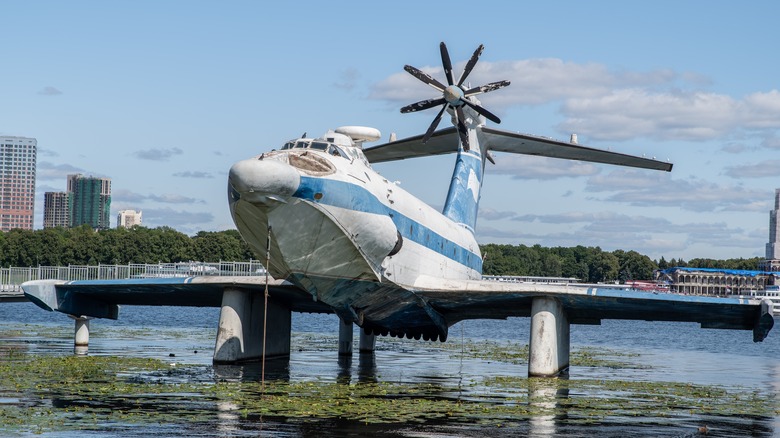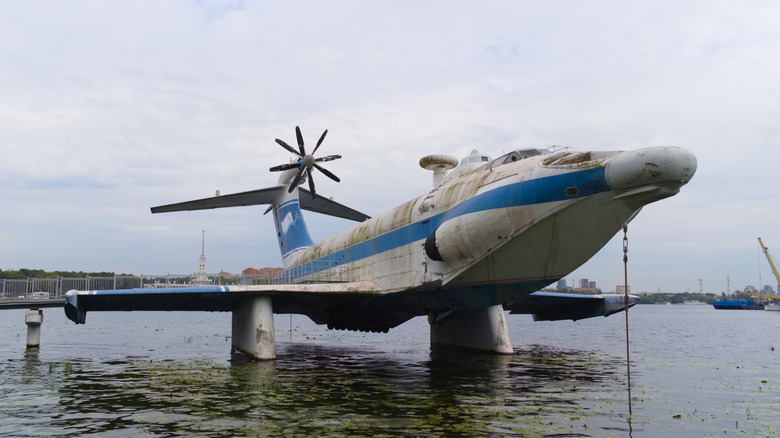How This Cold War-Era Ekranoplan Was Able To Zoom Over Water
The Soviet A-90 Orlyonok Ekranoplan is a plane with features that inspire double-takes: short, stubby wings, and a tail with a turboprop in the middle. But what you'd notice more than anything is that Ekranoplans (like the Caspian Sea Monster) were flying a few feet off the surface of the ocean, and not because they're conducting an emergency landing. It was intentional.
In a sense, the A-90 Orlyonok Ekranoplan is an experimental aircraft that is singularly committed to the idea of ground effect, a form of flying in which pilots skim over the water or ground to reduce aerodynamic drag, and achieve lift and speed. This works due to masses of whirling air called vortices that form at the wingtips, which angle down and create what's known as downwash. If the plane is flying close to the surface, the spinning vortices impact the ground, and create a sort of cushion that ultimately reduces drag and adds lift.
While many pilots experience this floating effect while taking off or landing, Soviet ekranoplans, like the A-90 Orlyonok, harnessed it by design, creating a truly unique aircraft in the process.
A short-lived, but influential aircraft
Developed by aerodynamic engineer Rostislav Alexeyev, the A-90 (and earlier prototypes) were designed to exist in the space between a cargo plane and a boat, but faster than the latter and stealthier than the former. It ideally would transport troops and supplies across the Caspian Sea and the Black Sea regions, and featured a cruise speed of 248.5 mph, a 932 mi range, a payload of 61,000 pounds, two 12.7 mm machine guns, and giant wheels so it could roll ashore after landing on water. It entered service in 1979 in small numbers.
While it could technically fly over land, the A-90 was tested almost exclusively over water, since they were much less likely to encounter an obstacle there. Banking out of the way is very difficult at high speed when flying so close to the ground.
Like many ekranoplans, the A-90 project didn't quite survive long-term. Only a handful of A-90s were completed, and many of them crashed, with only a few surviving until the early 1990s. But it's a technology that continues to pique interest with regards to what's possible using ground effect technology, and both government agencies and private companies continue to explore it today.

